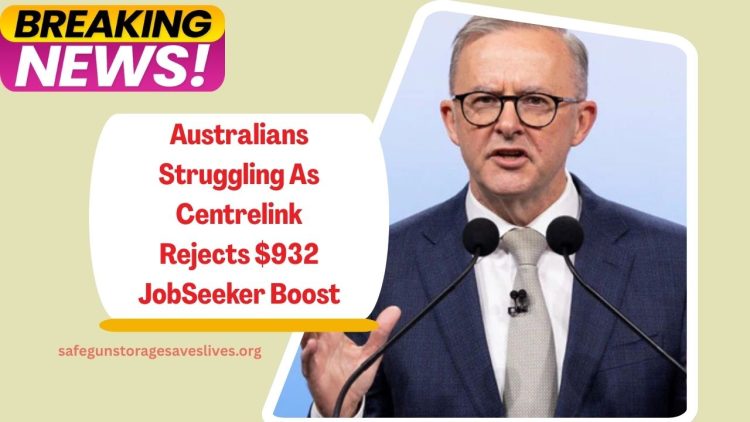As living costs continue to surge across Australia, many vulnerable citizens were hoping for a lifeline in the form of a $932 JobSeeker payment increase.
However, despite the pressure from advocacy groups and economic experts, both major political parties have declined to implement any significant increase in Centrelink benefits.
Current Centrelink Increases Called “Insufficient”
While Centrelink payments are adjusted throughout the year to align with inflation, recipients argue these incremental changes barely scratch the surface of what’s needed to survive in today’s economic climate.
For example, JobSeeker payments rose by only $3.10 per fortnight, bringing the new total to $781.10. Critics argue that this minimal rise is not enough to cover even the most basic daily expenses.
Perth resident Damien stated that this minor increase wouldn’t even cover the cost of two litres of milk, calling it “a joke.”
Retirees like Marge have also expressed frustration over meagre Age Pension adjustments, stating that a $0.25 daily increase per person is an insult given rising costs for essentials such as groceries, utilities, and medicine.
Expert Economists Push for Investment in JobSeeker
Economist Nicki Hutley shared data on national television highlighting that every $1 invested in JobSeeker payments results in a $1.25 economic return.
This suggests that increasing social support payments could improve community health, reduce government expenditure in other areas, and boost productivity.
Hutley noted the findings of the Economic Inclusion Advisory Committee, which recently recommended raising JobSeeker to 90% of the Age Pension, equating to $942.39 per fortnight—a $161.29 increase from current levels.
Political Parties Remain Firm Against Increases
Despite the mounting criticism, both the Labor Government and Coalition have reiterated their stance against a JobSeeker increase.
Housing and Homelessness Minister Clare O’Neil claimed that while budgets are drafted with the intention of easing financial pressure, a new JobSeeker increase is not on the agenda.
Similarly, Shadow Social Services Minister Michael Sukkar voiced concern about Australia’s rising number of “working poor,” yet declined to support any funding hikes due to tax limitations.
Sukkar emphasized the challenge of finding a balance between increasing social welfare and placing a heavier tax burden on working Australians.
Calls to Redirect Funds From Other Sectors
The Australia Institute’s executive director Richard Denniss offered a counterargument—questioning the government’s priorities.
Denniss pointed out that while the country struggles to support its unemployed and disadvantaged, billions are spent annually on fossil fuel subsidies and military programs.
Denniss noted:
- $15 billion per year goes to fossil fuel subsidies
- $360 billion earmarked for the AUKUS nuclear submarine program
He argued that the government has the financial capacity but lacks the political will to redirect these funds toward social support like JobSeeker.
Current JobSeeker Payment Breakdown
| Payment Type | Amount (per fortnight) | Proposed Increase | Recommended Total |
|---|---|---|---|
| JobSeeker (current) | $781.10 | +$161.29 | $942.39 |
| JobSeeker (recent rise) | +$3.10 | — | — |
| Age Pension (comparison) | ~$1,047.10 (single) | — | — |
Despite overwhelming calls from economists, pensioners, and advocacy groups, the federal government has firmly rejected a substantial $932 JobSeeker payment increase, leaving millions of struggling Australians disappointed.
With cost-of-living pressures mounting and inflation outpacing social support adjustments, many continue to question the government’s priorities—and whether real financial relief for vulnerable citizens is truly on the horizon.
FAQs
How much did JobSeeker payments increase recently?
The JobSeeker payment increased by $3.10 per fortnight, now totaling $781.10, which many consider insufficient.
What increase was recommended by the Economic Inclusion Advisory Committee?
The Committee recommended raising JobSeeker to 90% of the Age Pension, or $942.39 per fortnight.
Why won’t the government support the $932 JobSeeker increase?
Both Labor and Coalition parties cite budget constraints and potential tax burdens as reasons for rejecting the increase.




